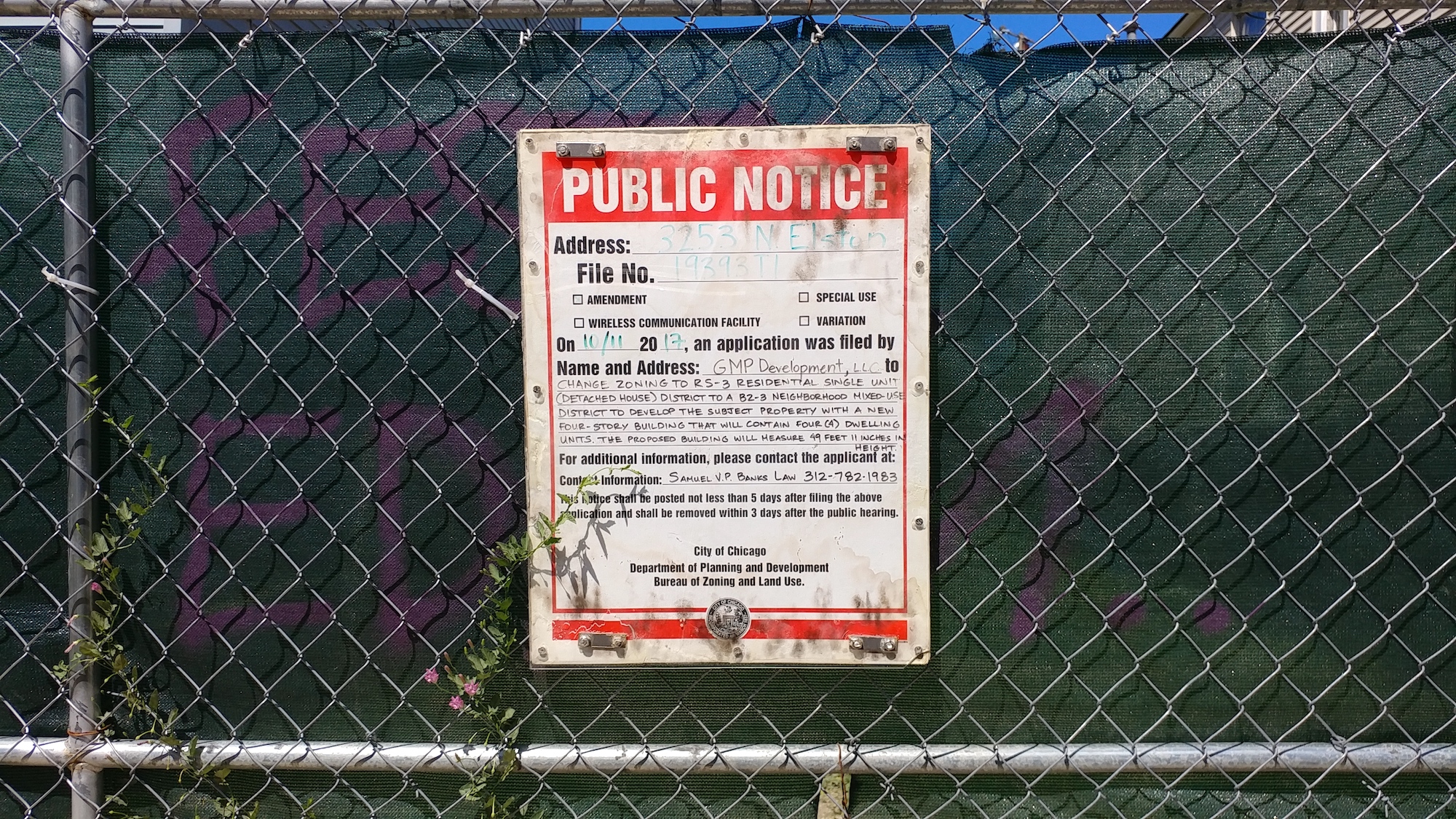While walking through Chicago’s booming neighborhoods and retail corridors, it’s tough to miss the flurry of new construction taking place. But what is often overlooked are the city-mandated notices alerting residents to changes to a property's zoning—the underlying city code that dictates the types of buildings that are allowed. The red and white signs, roughly the size of a small poster, are typically taped to a window, zip-tied to fencing, or wrapped around a lamp post. The handwritten information on these signs can smear or fade over time, making them indecipherable.

While zoning changes for high-profile towers and transit-oriented developments often draw the most attention, it’s usually the smaller, under-the-radar proposals that can have the biggest impact on a residential block—both in accelerating home values and changing the dynamic of a neighborhood. It's become such an issue that one alderman, Carlos Ramirez-Rosa (35th Ward), recently changed the way that information about new proposals is displayed in his ward.
After a new boutique hotel was proposed at the intersection of Milwaukee and Kedzie in the heart of Logan Square, Ramirez-Rosa required the project’s team to mail out printed notices to residents within a 750-foot radius of the site (the standard legal requirement is 250 feet), while also displaying a newer type of sign at the vacant property being redeveloped.
.jpeg)
For one thing, the new signage is larger than what the city currently mandates, but it also displays a rendering of the proposed structure, as well as the developer’s contact info and the time and place of any upcoming meetings regarding the property—both in English and Spanish. “What generally happens is that people get a letter in the mail and it can be pretty scary,” Ramirez-Rosa says. “It’s difficult for individuals to understand what is being proposed and what is being asked of them.”
According to Ramirez-Rosa, the measure is meant to present zoning changes in a way that's not only easier for residents to understand, but one that increases transparency. He credits the Logan Square Neighborhood Association, a local social services organization, with the idea, and says he's drafting an ordinance that would require this type of signage to be used citywide.
MarySue Barrett, President of the Metropolitan Planning Council, agrees that the city can improve the way it signals changes at the pedestrian level.
“If you look up the zoning code, it’s full of letters, numbers, and codes—that’s the way it’s been for a long time,” Barrett says. “Engaging with the community and providing information that is easy to understand is going to help minimize misunderstandings and potentially minimize conflict.”
Barrett believes that improving the way zoning information is distributed is a natural evolution of the development process, and an example of communities stepping in to better fulfill their own needs. However, there’s always going to be a negotiation between developers and residents, she adds.
“There’s often a lot of back and forth, and any smart developer working on a major proposal is going to have a multifaceted community engagement and communication strategy. However, when you get down into smaller scale neighborhood sites, there’s less information, and that’s maybe where some of the fears come into play.”



